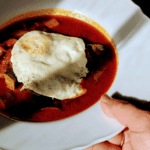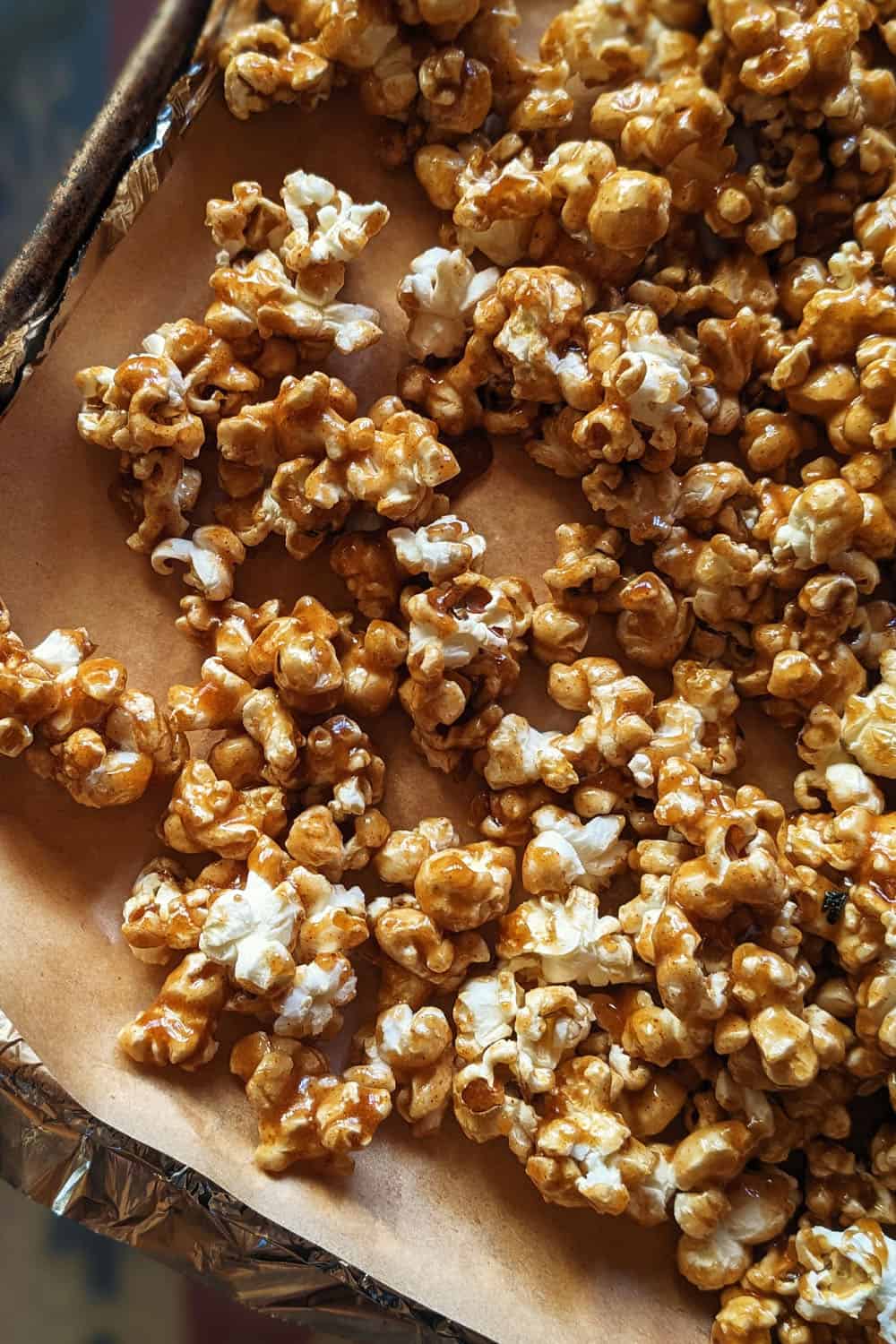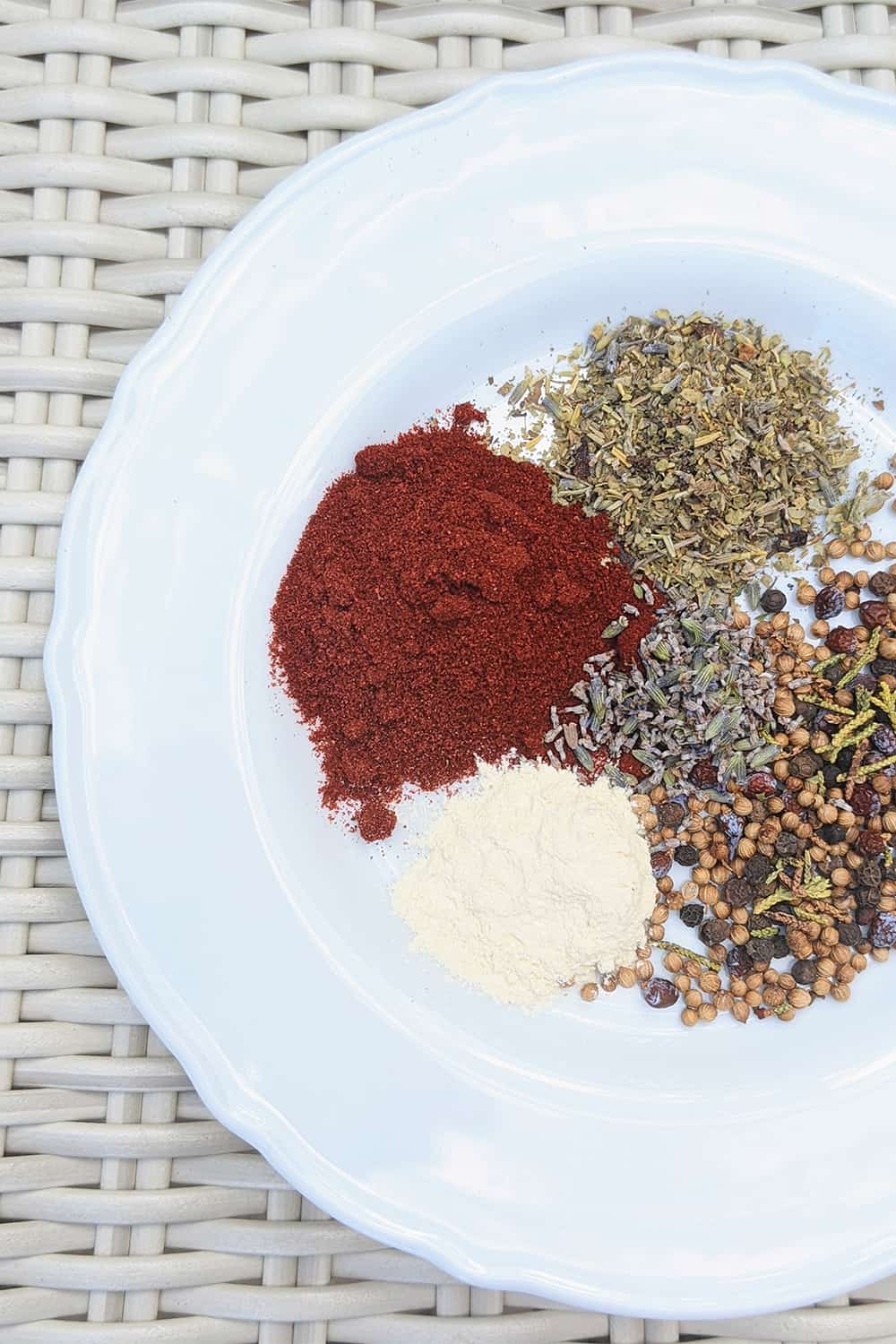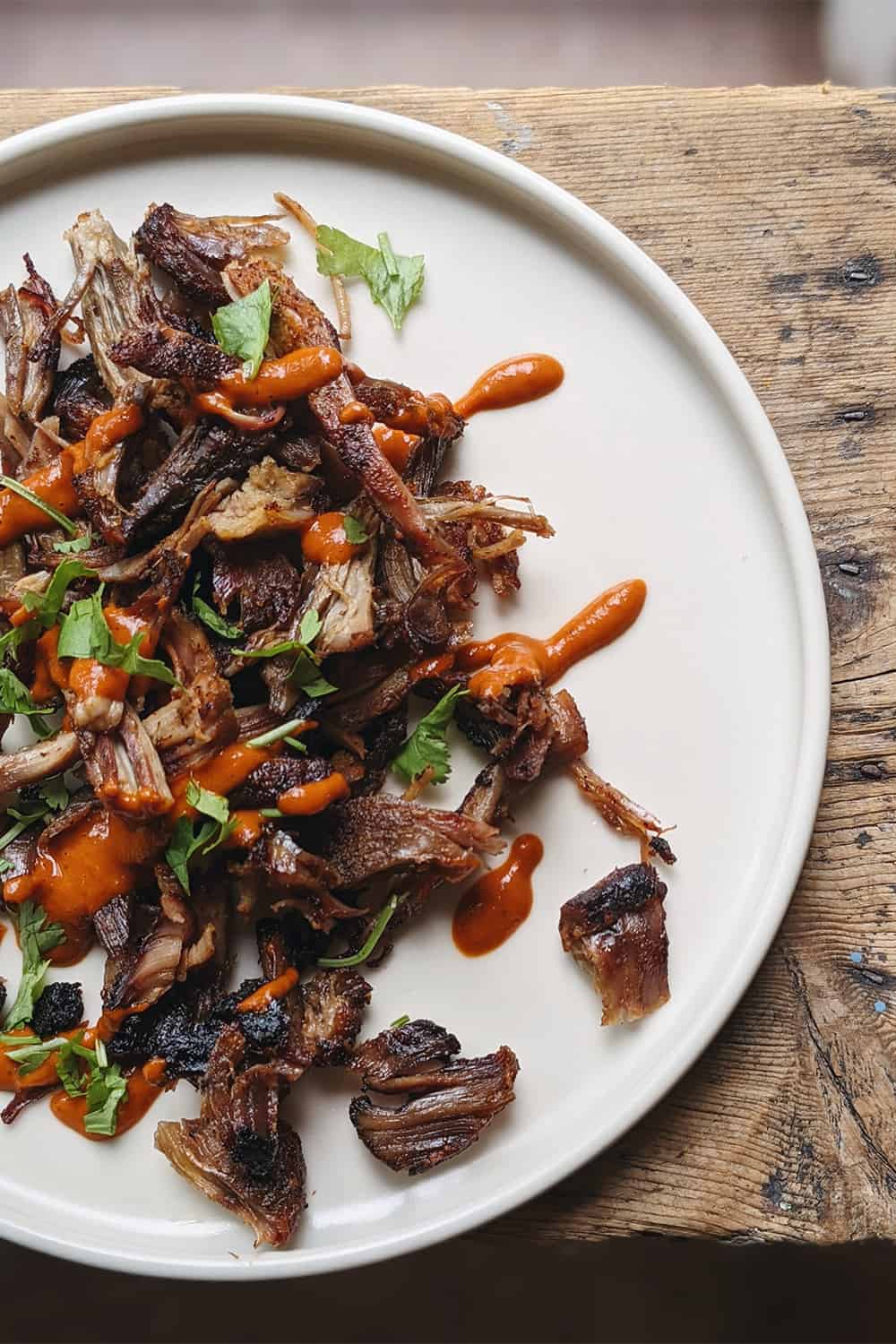I’m not calling this a breakfast soup even though the photo has a fried egg floating on top, but this soup is so versatile, warming, and nourishing it can easily be enjoyed any time of the day. On the day I made this hearty beef and red chile soup it simmered away on the stove all afternoon and we had it for dinner. But the next morning, things got really exciting. Some leftover soup warmed up with an egg on top seemed like the breakfast that made the most sense on a cold morning. And wow, we were right.
A New Mexican Inspiration
So this story really begins because I picked up a new chile ristra and have been looking for a way to utilize some of the brilliantly red dried chiles hanging in my kitchen like a warmth-inducing chandelier. So in making this soup, New Mexico Red Chile is where I began.
The Power of Pantry Staples
Then of course, I looked around to see what needed to be used up in my kitchen. I noticed some zucchini squash in the fridge that I had purchased but then forgot to use. This is the way it goes and I have to admit, I love when these parameters come into play and combinations I may have never thought of simmer to the surface. And that’s what happened here. If I had a completely blank page in front of me I can imagine myself thinking about making a different soup altogether. Maybe I would have added beans or cauliflower or pumpkin. But in that moment, I had zucchini and I’m grateful I did.
A Squash for All Seasons
You’ll notice that I am using the broader name “Squash” in the title of this recipe. It’s important to mention because you can use any variety of squash here. Especially being that we are smack dab in the middle of winter squash season. Whatever squash you want to use, consider how you want to prepare it before adding it to the soup.
For a summer squash like zucchini, it can just be diced and added to the soup. If you use Butternut, you can trim it, peel it with a vegetable peeler, take the seeds out and then dice it for soup. For Kabocha or Delicata squash varieties, you can simply trim off the ends, slice it in half to remove the seeds, then dice it leaving the edible skin on before adding it to the soup. If you wanted to use a pumpkin, you could cut the pumpkin into quarters or wedges (depending on size), roast the pumpkin in the oven with a drizzle of olive oil, salt, and pepper before peeling it and dicing the roasted pumpkin. If you use cooked squash, you can add it towards the end of the cooking process, about 15 minutes before serving.
This soup can be served on its own, or garnished with cilantro or chives. I would recommend some warm bread or tortillas on the side.
PrintHearty Beef, Squash, and Red Chile Soup
A versatile and warming soup that can be enjoyed any time of day. This hearty beef, squash, and red chile soup is perfect for using up winter squash and red chiles.
- Prep Time: 1 hour
- Cook Time: 2 hours
- Total Time: 3 hours
- Yield: 8-10 servings
- Category: Soup, Fall, Winter, Stew
- Method: Simmer
- Cuisine: New Mexican
Ingredients
for the chile sauce:
- 2 dried New Mexico red chiles
- 3 dried guajillo chiles
- 2 dried chipotle chiles
- 1 T. butter
- 1 small red onion, sliced
- 4 garlic cloves, thinly sliced
- 3 c. water
- 2 T. honey
- Salt and pepper, to taste
For the meat:
- 3 lb. beef eye of round steak, trimmed and cut into ½” pieces
- Salt and pepper
- High smoke point oil for searing (grapeseed, avocado or vegetable)
For the soup:
- 2 T. butter
- 1 large onion, diced
- 2-4 garlic cloves, thinly sliced
- 1 T. high desert herbs
- 2 t. ground coriander
- 1, 14-oz. can fire-roasted diced tomatoes
- 4 c. diced zucchini or butternut squash
- 2 qt. (4 cups) beef broth
Instructions
First, let’s make the chile sauce.
Fill a medium saucepan with water and bring to a boil over high heat. Now place a large, heavy-bottomed soup pot over low heat.
Prepping the Chiles
Remove the stems and seeds from each of the dried chiles and break them into pieces. Transfer the chile pieces to the dry large pot and cook them over low heat for a couple of minutes to activate their flavor, stirring occasionally. Transfer the lightly seared chiles to the pot of hot water. It doesn’t matter if it is boiling yet, just throw them in and let them take a hot bath for ten minutes before straining and reserving the reconstituted chiles.
While they are in the water, add the butter to the soup pot along with the onion. Let the onions cook for around five minutes until they are starting to caramelize. Add the garlic, cook another minute or so more, and transfer this mixture to a blender. Add to the blender the reserved chiles, water, honey, and a pinch of salt and pepper. (Note: whenever measuring honey, with your finger, lightly rub the inside of the measuring spoon with oil before adding the honey to help it come out easier). Blend until completely smooth, taste, adjusting seasoning as needed and reserve.
Turn up the heat
Turn the heat up to medium-high and add 1 T. of the oil for searing to the pot. Generously season the diced beef with salt and pepper, and working in batches so as not to overcrowd the pan, sear the beef on all sides and transfer to a bowl. Repeat this process until all of the beef is seared. Reserve.
Now to the same pot add the butter. Add the onion and cook, stirring frequently until the onions are beginning to caramelize, around five minutes. Add the garlic and cook another minute more. Add the High Desert Herbs and coriander. Stir and let cook for a minute or so.
Simmer until tender
Now add the tomatoes to deglaze and scrape the bottom of the pan, making sure to incorporate all of the caramelized goodness into the chili. Add the chile sauce, seared meat, squash, and beef broth. Bring this to a boil and lower the heat to a simmer. Let this simmer for around two hours, or until the beef is tender. Taste and adjust seasoning as needed.







